DS Resuscitated After Parked for 20+ Years in Toronto
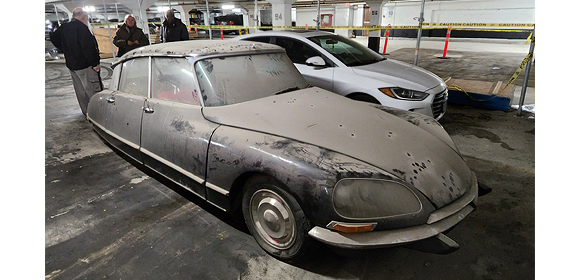
by George Dyke….
When hearing of the passing of former Citroën Autoclub Canada past president Glen Fryer, his children also mentioned to me that there was a DS in the garage of a condominium Glen once owned that now belonged to them. The car had sat there for at least 20 years and now they have two business days to get the car out of the garage because the garage is being renovated and notice was given to get it out or pay a hefty fine and disposal charge.
Glen was known to have cars scattered about town in various states of need. He mentioned this DS to me few times, Glen saying that he would invite me over to see it, but alas that never happened. Now, with this late-afternoon call, there was an urgent request for me to help solve the problem.
I immediately called Bernard Laborde, our specialist Citroën mechanic in Toronto, and asked if he could accompany me that evening to go see the DS and try to figure out what will be needed to get it out of the condominium garage. I also needed to figure out what to do with the DS if we were able to extract it as Glen’s children said they wanted to add dollars to Glen’s estate and not have to sink any money into the car.
For some additional advice and muscle power, I contacted Herns-Pierre Jerome in Toronto who currently owns two DS and has owned many prior to now.
We all went over to Etobicoke (a western suburb of Toronto) and met Glen’s daughter and son then ventured down in the garage to see what awaited us.
To our surprise, other than a good layer of soot, what we found was a 1969 DS21 Pallas that looked in remarkably good condition. Mind you, the doors were all locked and Glen’s son and daughter could not locate any keys.
I had the presence of mind to bring jumper cables and a tire pump. My gosh — the old Michelins seemed to hold fresh air!
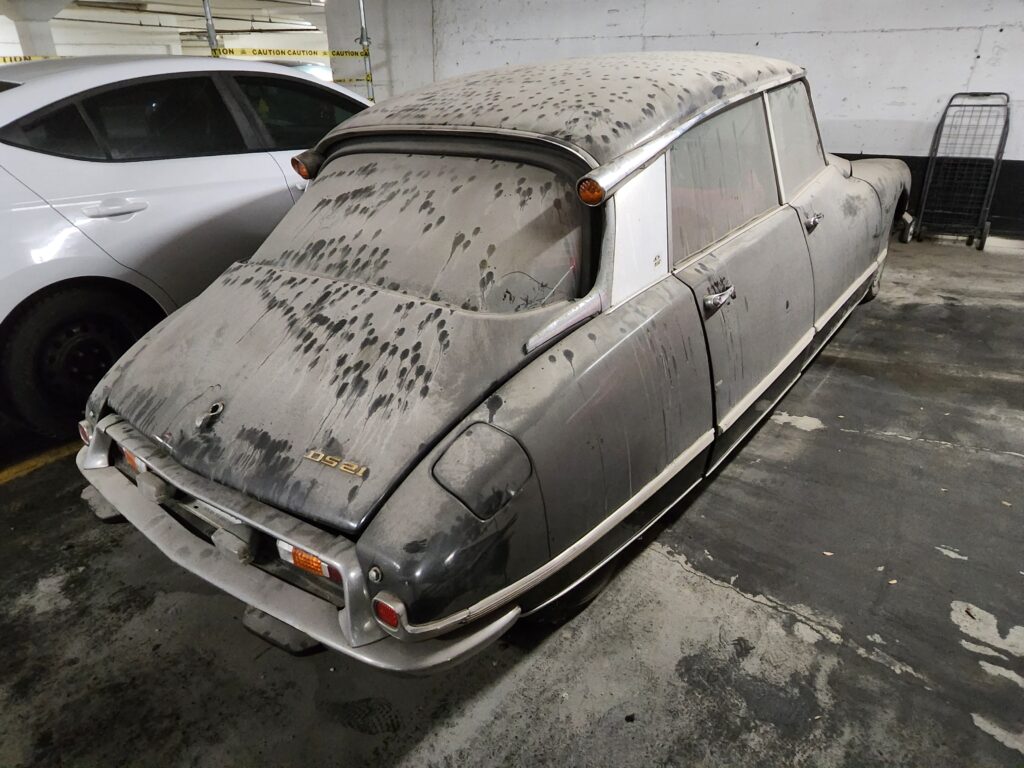


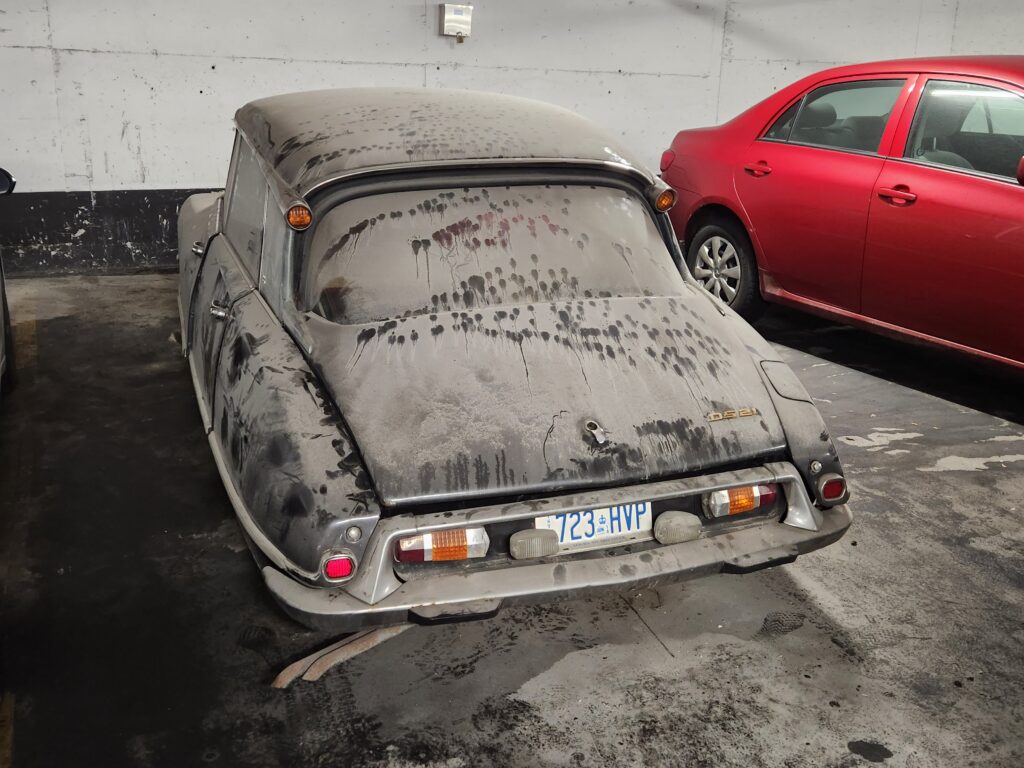
To get inside, Bernard removed the driver’s side rear fender and managed to jimmy the rear door closing latch to get the rear door open. Once inside, he reached over the front seat to open the driver’s door and as luck would have it, he spotted a key sitting in the ignition switch.
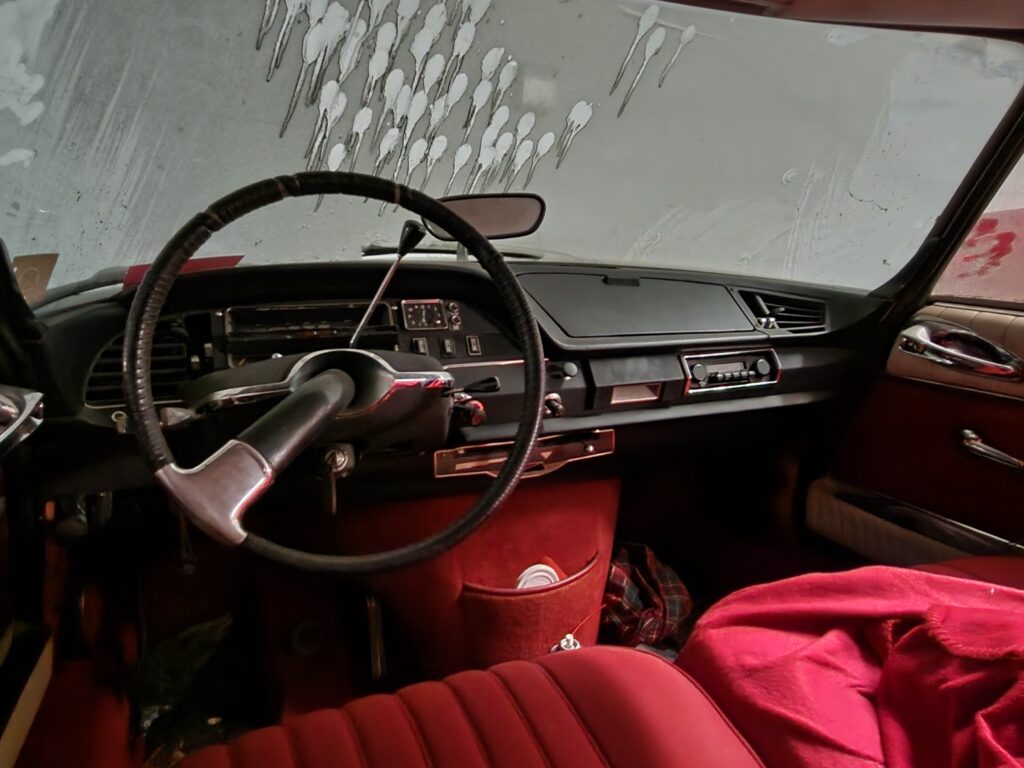


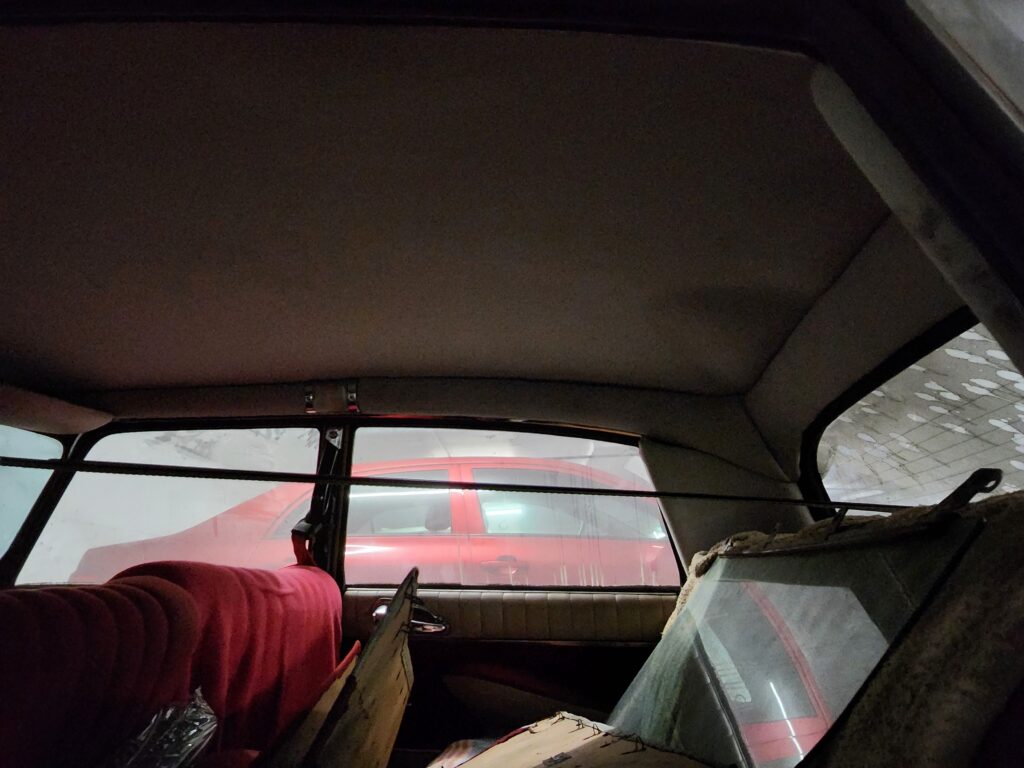
We knew it was not going to be just a turn of they to get this car going, but at least we able to now open the hood from the inside and see what awaited us there.
The battery had been pulled, there was a spare gas can, where the spare tire would normally rest, with a hose running from it to the fuel pump — a sign that someone had tried to work on this DS at some point, and a good indication that there was probably an issue with the fuel tank and the line running from it.
We determined that the engine and the gearbox were not stuck (by manually cranking both), and that oil was at least present on the dipstick. I ran cables from my Toyota Highlander battery to the cable ends sitting on the DS battery tray. The moment I applied power we were surprised to see that the alternator spin. That shouldn’t happen, but pressing on — we were briefly able to engage the starter motor to verify its operation. We also checked for spark by pulling a spark plug lead and holding the end close to the block.
The hydraulics seemed to be all there, but this DS was LHS (red fluid despite a green colour LHM reservoir that had probably been swapped in at some point) and looking in the reservoir the LHS appeared to be gelled into a tan coloured sludge. (D models brought into Canada and the US used LHS red fluid up until mid-1969 when the switch was made to LHM green fluid that had been used in Europe since 1967.)
Hydraulic stagnation aside, at that point we felt that if we returned with a battery, some gas, a can of quick start, antifreeze (the radiator was bone dry), we might have a good chance of getting it started. Getting it to rise could be a whole other challenge but first things first, and I would bring along a old can of LHS that I happened to have stashed away home.
Despite the back seat having the gas tank cover on it and being piled with stuff, the interior held up very well with plush red jersey seats, white DS Pallas door trim and an intact dashboard with radio. Floor carpets were in the trunk.
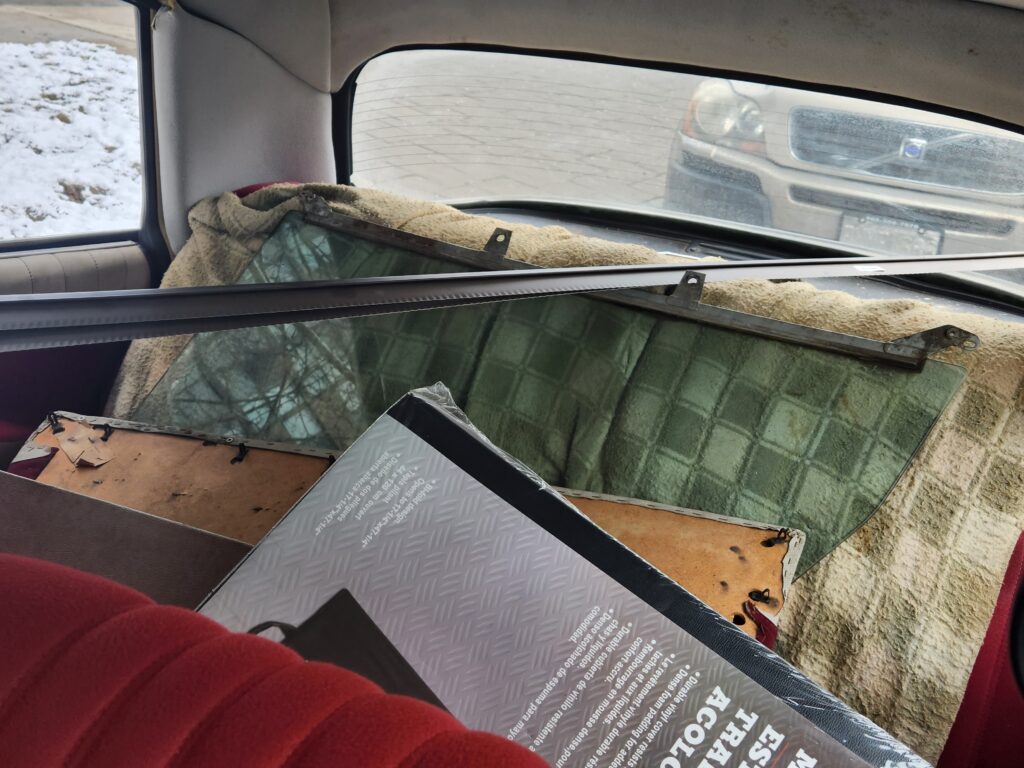


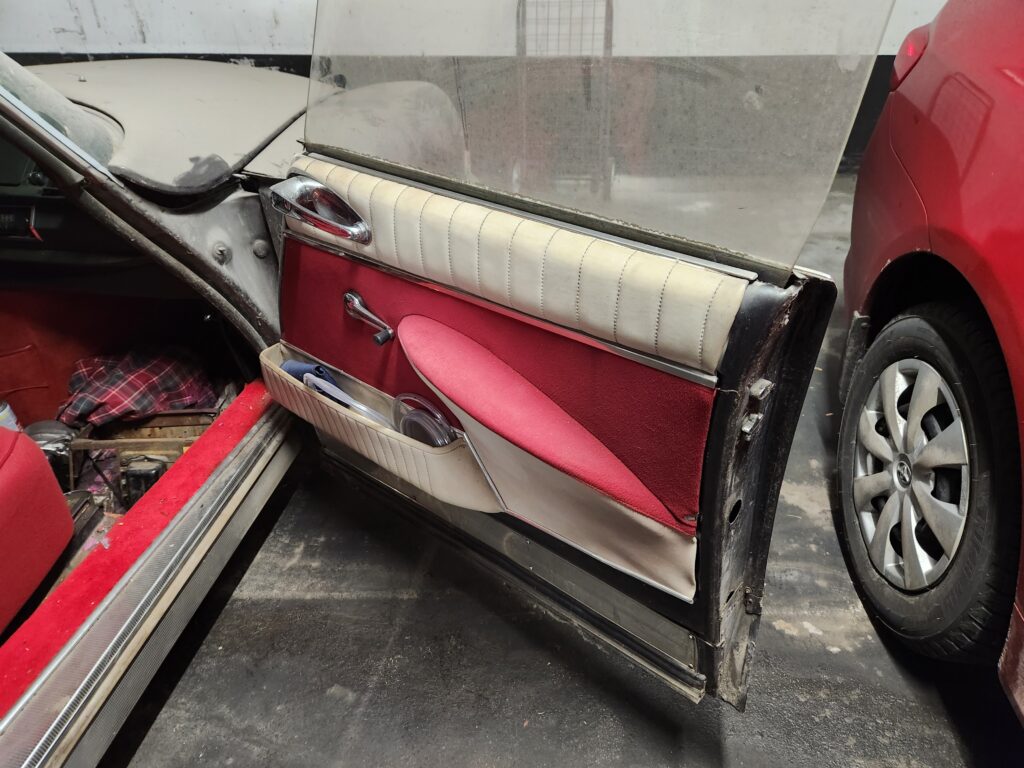
The next morning I needed to plan for the actual movement of the DS — whether it comes out of the garage on its own or we have to drag it. The garage door to the condominium was barely 7 feet tall and at the bottom of a ramp, so a flat-bed let alone a tow truck were not options. You could just manage to get a regular height pick-up truck in there with perhaps a double axle car trailer in tow. Even then, maneuvering in the garage would definitely be tricky. It would be far better to put the car on a flat-bed or the car trailer outside.
Then there was the question of what to do with the DS? It was the middle of January in Toronto, and ideally if the car sat 30+ years in a condo garage it would be crime to just place it outside even with the indignity of a tarp over it for some degree of protection. (A DS sitting outside on the ground during any season in Ontario is not a good thing.)
Fortunately I remembered that one of our Club members, Mony Sora, has everything we might need for transport and storage provided we can get the car to rise and drive a short distance. Loading it the garage would be pain, but Mony has a Toyota Tundra pick-up and a double axle car haul trailer that could fit in the garage if needed. He also had a winch in case the DS wouldn’t move or rise. One other thing Mony had was protected storage — having just completed a 50 x 60′ garage structure with a concrete floor at his cottage near Beaverton.
I called Mony and explained the situation. He said he was up for the move. Bernard was available as well, so on Monday morning we headed back to condominium garage…
With a new battery installed, and disconnecting the alternator (deal with that later), Bernard worked on cleaning up the points and we put fresh gas in the spare can up front.
We tried staring a couple times and the car would turn over but not catch. Then we tried pouring a bit gas directly in the carb to prime it. It took three attempts bit Lo-and-behold that got the DS to sputter a bit. If we could get the fuel pump to operate now, we might have a DS that could run for more than a few seconds. I had an inline fuel siphon my tool kit I brought and we installed that in the line from the gas can. With a few squeezes of siphon we got the gas flowing to the engine through the fuel pump and DS running albeit roughly. With the fuel pump functioning we removed the siphon, put the hose into spare gas can, and started the car again this time letting the engine warm up and run to the point where it could idle (albeit roughly) on it’s own.
After more than 10 minutes running the DS had not risen, so Bernard opened the reservoir tank and pulled out the pick-up tube and filter and poured the LHS I had brought directly into the tube so that it flowed into the line toward the hydraulic pump. He did this couple of times and then re-seated the pick-up tube into the reservoir tank. About another 5 minutes passed and the DS amazingly DS rose – first the back and then the front.
With luck on our side, the next step was to see if the steering and the semi-automatic gearbox and clutch were OK. Bernard got in the driver’s seat again and grabbed the steering wheel to pleasantly discover that steering rack was good. He cautiously applied the brakes and then engaged reverse. The DS backed up! He tried 1st and it went forward. What a relief as now it appeared that it could actually be driven out of the garage as is!
Once outside it was only a matter of getting the DS on the trailer.

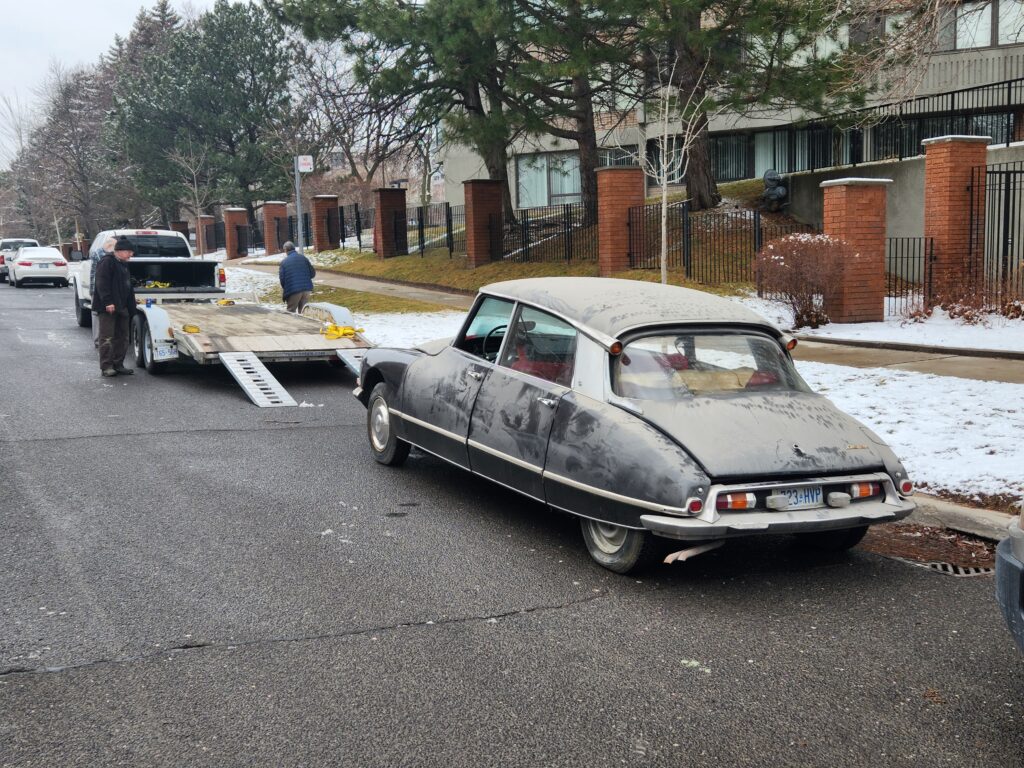
The only tense moment was as Bernard drove over the ramps, the trailer tipped back quite a bit causing him panic for a spit-second but give it the gas and get it on there:


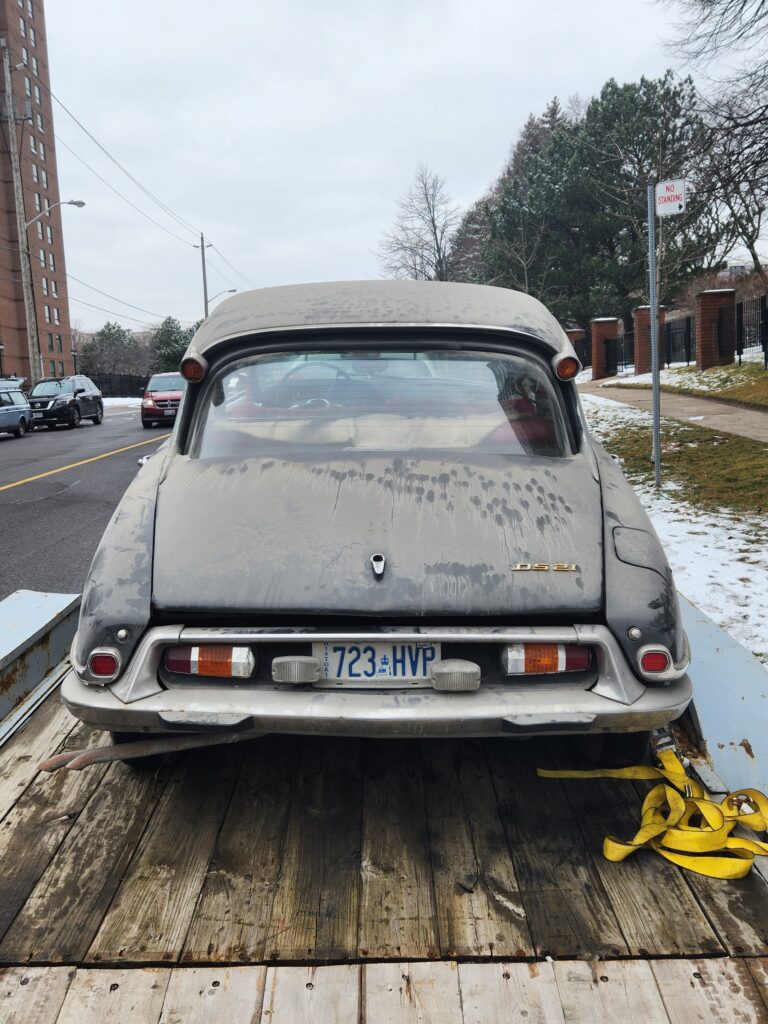
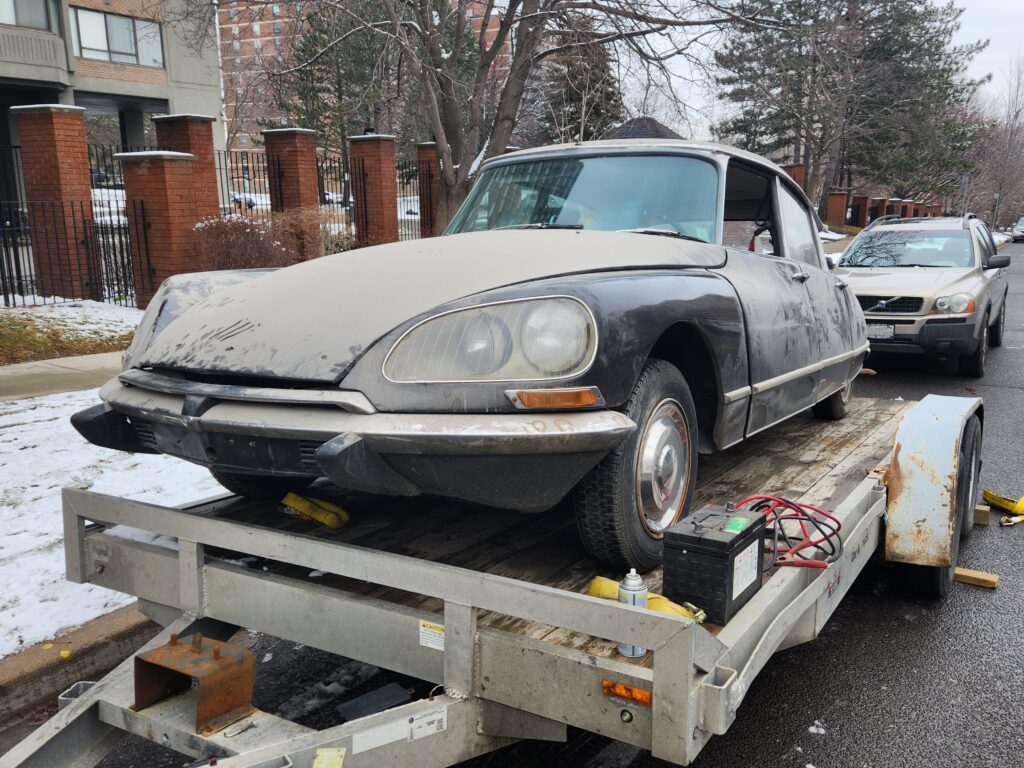
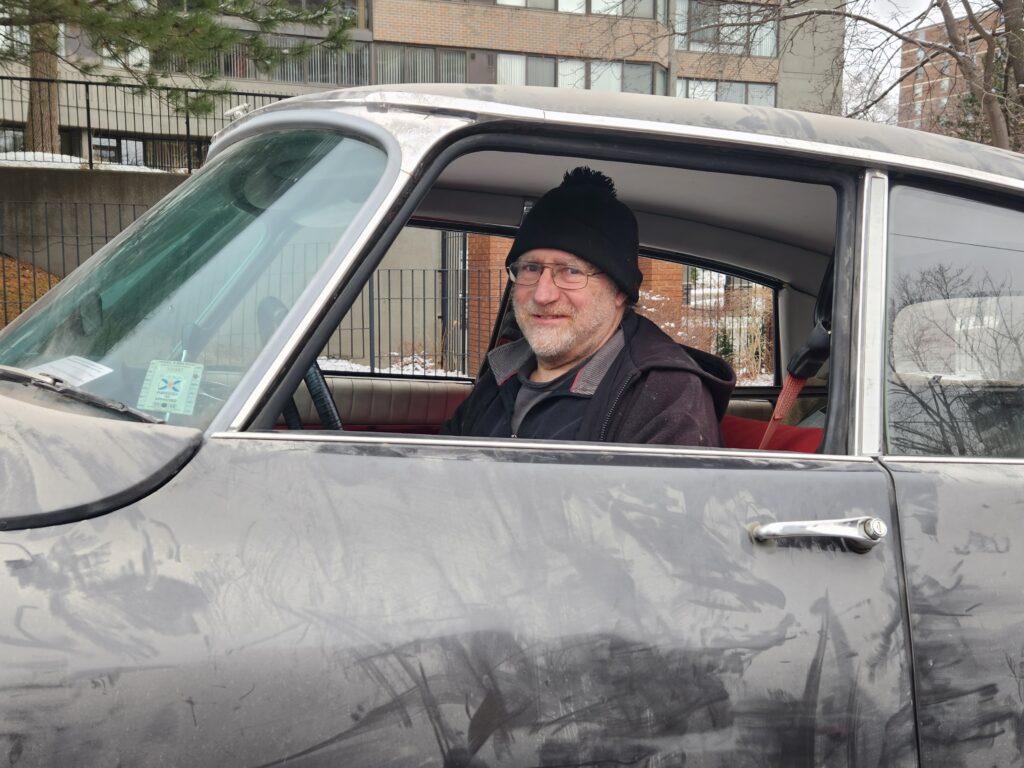
With the excitement of the morning over and the DS securely on the trailer the trip to Mony’s garage near Beaverton was uneventful.
I was pleased that even with such little notice we were able to save another one of Glen Fryer’s Citroëns from a horrible fate. And as a pleasant postscript; Mony was so impressed with the DS that he purchased it from Glen’s children and will be doing the necessary work this spring to get it licensed and on the road once again.
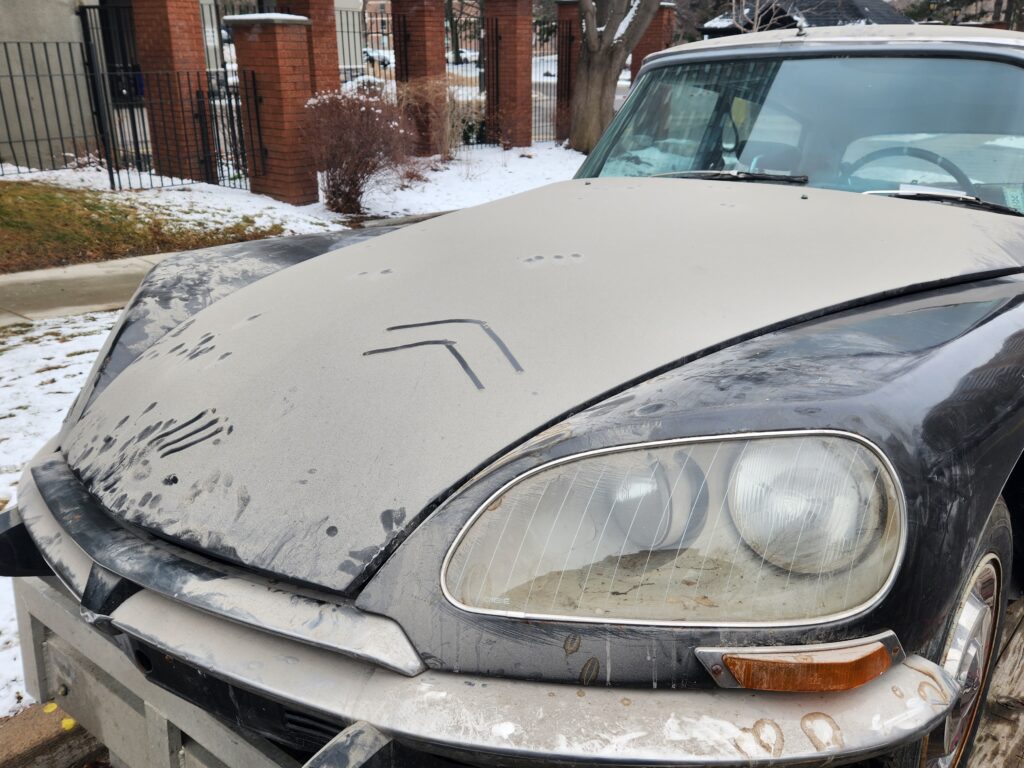
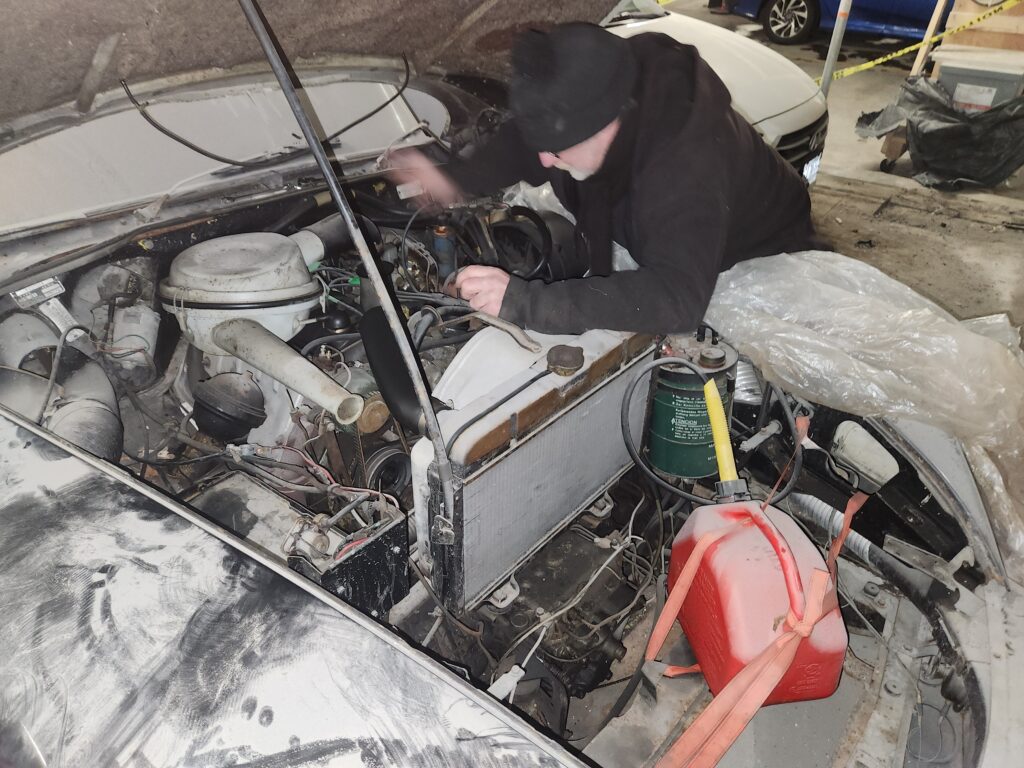

Amazing story, well done to all of you! So happy to see another DS saved.
Great story! Looks amazing. Great year. Not rusty?!
Aren’t these great old cars! To spring to life again with a knowledgable crew tending to the necessities. And what a beauty! At least it was put away in a condition that it could survive. That’s a car with good karma. Hope the new owner loves it.
I can’t wait to see the follow-up story on this gem after Mony works his Citroen magic on it. Great job!
What a gem! It does your heart good to see a car as beautiful as this to come back to life with so little effort. A bit of “lifeblood”, a cupful of water and a little spark and she is back to life. Well done to all concerned in a short time period,
Cameron J Henry, Blackpool, England
What a great story I would have loved to have been there
Awesome, we had many Citroens from 1955 to 1978 back in Finland. this warms my heart to read this article.
a good car story always makes me cry